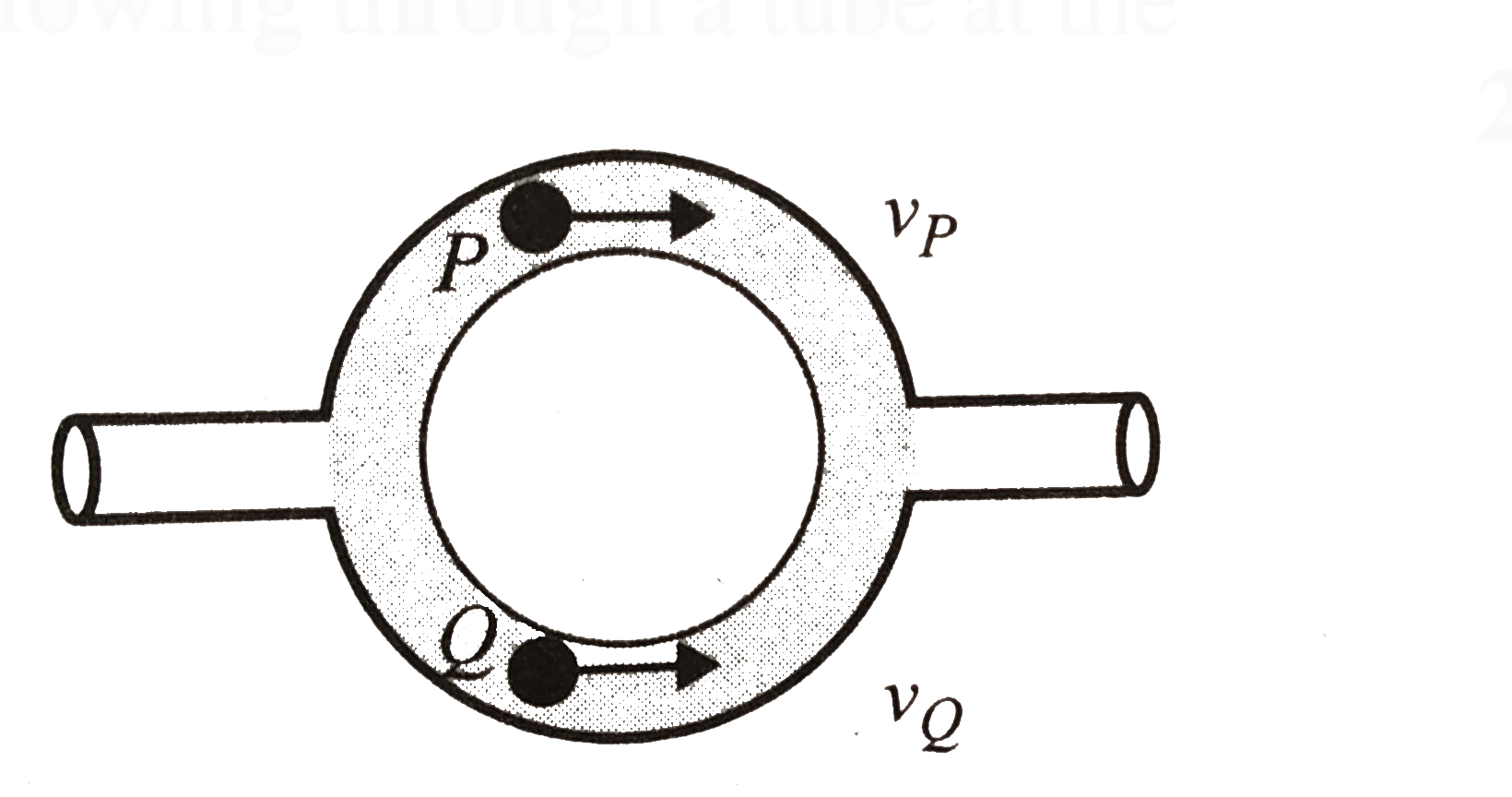(a) What is meant by the principle of continuity ? Show that velocity of a liquid is inversely proportional to the area of cross-section of a pipe or tube.
Apply Bernoulli.s theorem : 12ρv21+ρgh=12ρv22+0 , find v2
Now apply principle of continuity :
A1v1=A2v2
(πr21)v1=(πr22)v2 find r2
Topper's Solved these Questions
Similar Questions
Knowledge Check
A liquid flows through a horizontal tube as shown in figure. The velocities of the liquid in the two sections, which have areas of cross-section A1 and A2 and v1 and v2 respectively. The differnece in the levels of the liquid in the two vertical tubes is h. then
 Av22−v21=2ghBv22+v21=2ghCv22−v21=ghDv22+v21=gh
Av22−v21=2ghBv22+v21=2ghCv22−v21=ghDv22+v21=gh
The vertical height of mercury in a simple barometer is dependant on the area of cross-section of barometer tube.
View SolutionA constant voltage is applied across a wire of constant length then how drift velocity of electrons depends on area of cross-section of wire.
View SolutionStatement I: A wire of uniform cross-section and uniform resistivity is connected across an ideal cell. Now the length of the wire is doubled keeping volume of the wire constant. The drift velocity of electrons after stretching the wire becomes one-fouth of what it was before stretching the wire.
Statement II: If a wire (of uniform resistivity and uniform cross section) of length l0 is stretched to length nl0, then its resistance becomes n2 times of what it was before stretching the wire (the volume of wire is kept constant in stretching process). Further at constant potential difference, current is inversely proportional to resistance. Finally, drift velocity of free electron is directly proportional to current and inversely proportional to cross-sectional area of current carrying wire.
View SolutionA : When a steady current flows through a conductor of non - uniform cross-section , the current density , electric field and drift velcoity do not remain constant.
R : For a constant current the current density electric field and drift velocity are inversely proportional to cross - sectional area.
View SolutionAssertion : The water rises higher in a capillary tube of small diameter than in the capillary tube of large diameter.
Reason : Height through which liquid rise in capillary tube inversely proportional to the diameter of capillary tube.
View SolutionFigure shows a liquid flowing through a tube at the rate of 0.1m3/s. The tube is branched into two semicircular tubes of cross-sectional area A/3 and 2A/3. The velocity of liquid at Q is (the cross section of the main tube is A=10−2m2 and vp=20m/s)

View SolutionA solid metallic sphere of radius r is allowed to fall freely through air. If the frictional resistance due to air is proportional to the cross-sectional area and to the square of the velocity, then the terminal velocity of the sphere is proportional to which of the following ?
View Solution
